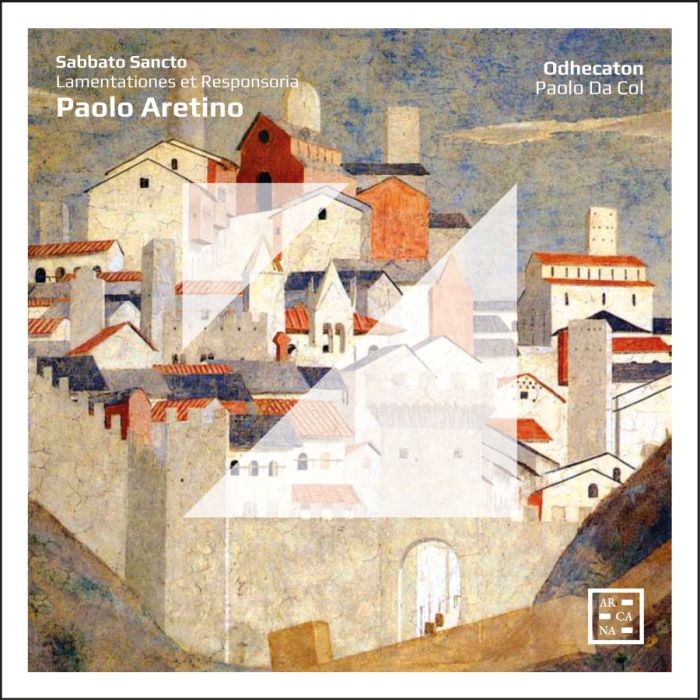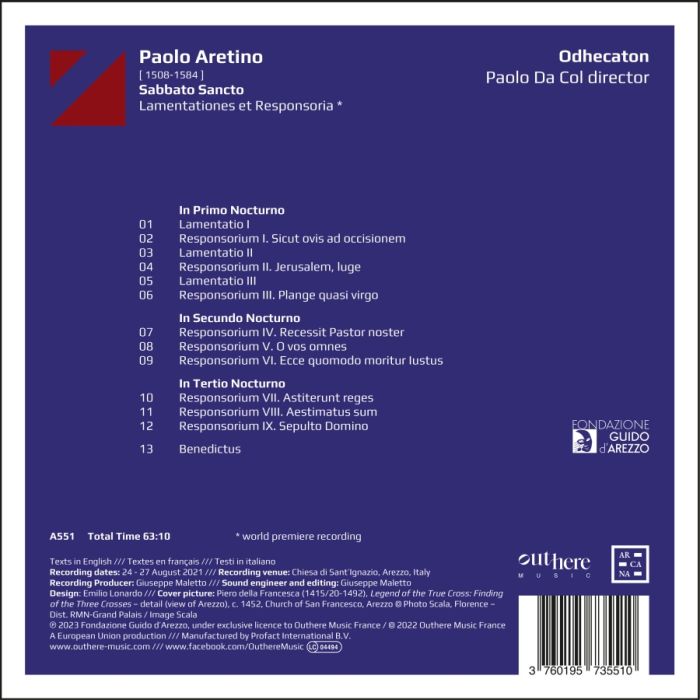
(Produkt nie został jeszcze oceniony)
kompozytor
Aretino, Paolo
tytuł
Aretino: Sabbato Sancto
wykonawcy
Da Col, Paolo, Odhecaton
nr katalogowy
A 551
opis
Within the Italian polyphonic repertoire for Holy Week of the first half of the 16th century, a group of works that particularly stands out for its organic, comprehensive and unique qualities are the two books of four-voice Lamentations and responsories for the office of Tenebrae from the Triduum sacrum composed by Paolo Aretino (Paolo Antonio del Bivi, 1508-1584). They were published respectively in 1544 (the responsories: a first printed edition of its kind, to the best of our knowledge) and 1549 (the Lamentations). Both books were reprinted in 1563, a rare occurrence for a collection of this type.R37Aretino, a maestro di cappella at both the cathedral and Santa Maria della Pieve in Arezzo, was acclaimed in his own day as a true symbol of the city’s glory, along with his fellow-citizen, the famous writer Pietro Aretino. He also had repeated contacts with the Medici court, and indeed certain characteristic features of his style can be traced to the late-15th century Florentine tradition of regularly using polyphony during the Triduum. In particular we note his use of equal voices and, above all, the adoption of an austere and solemn declamatory style closely linked to the structure of the text. All of this, however, is not only conveyed with extreme refinement, but also includes some very striking encroachments into vocal ranges rarely found in contemporary Italian music. An example is the use of two or three bass voices together with a low bass; as happens, for example, in the Lamentations for Holy Saturday, which in this recording are presented complete, together with their respective responsories.
•Aretino: In primo nocturno
•Aretino: In secundo nocturno
•Aretino: In tertio nocturno
YB:https://youtu.be/aB7b0Ho6Xcg
Works:
•Aretino: Benedictus
•Aretino: In primo nocturno
•Aretino: In secundo nocturno
•Aretino: In tertio nocturno
nośnik
CD x 1
wydawca
Arcana
data wydania
2.10.2023
EAN / kod kreskowy
3760195735510
79,00 zł
Produkt dostepny w niewielkiej ilości.
Wysyłka w ciągu 3 dni roboczych
Darmowa wysyłka dla zamówień powyżej 300 zł!
Darmowy kurier dla zamówień powyżej 500 zł!
sprawdź koszty wysyłki
